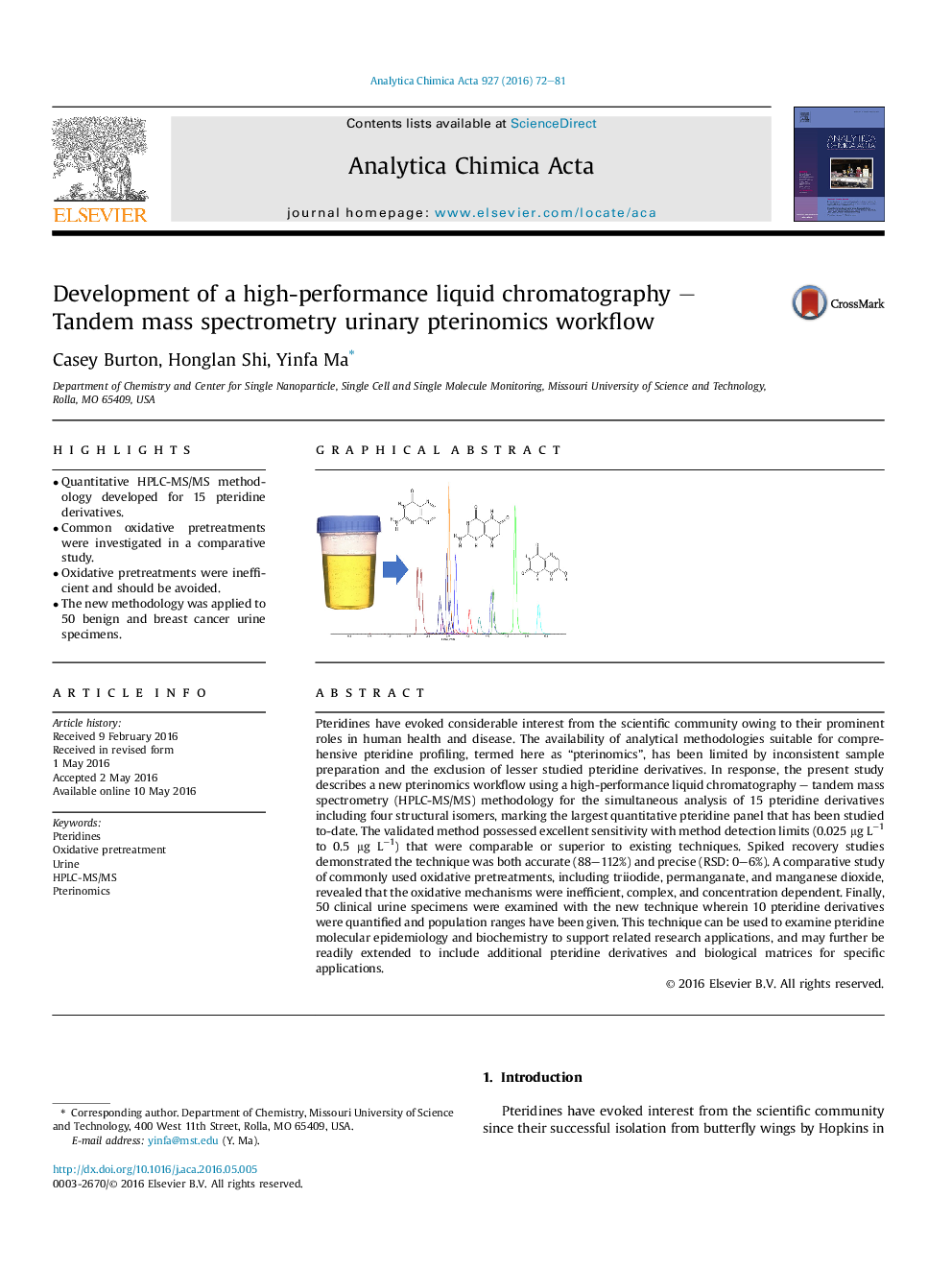| Article ID | Journal | Published Year | Pages | File Type |
|---|---|---|---|---|
| 1162914 | Analytica Chimica Acta | 2016 | 10 Pages |
•Quantitative HPLC-MS/MS methodology developed for 15 pteridine derivatives.•Common oxidative pretreatments were investigated in a comparative study.•Oxidative pretreatments were inefficient and should be avoided.•The new methodology was applied to 50 benign and breast cancer urine specimens.
Pteridines have evoked considerable interest from the scientific community owing to their prominent roles in human health and disease. The availability of analytical methodologies suitable for comprehensive pteridine profiling, termed here as “pterinomics”, has been limited by inconsistent sample preparation and the exclusion of lesser studied pteridine derivatives. In response, the present study describes a new pterinomics workflow using a high-performance liquid chromatography – tandem mass spectrometry (HPLC-MS/MS) methodology for the simultaneous analysis of 15 pteridine derivatives including four structural isomers, marking the largest quantitative pteridine panel that has been studied to-date. The validated method possessed excellent sensitivity with method detection limits (0.025 μg L−1 to 0.5 μg L−1) that were comparable or superior to existing techniques. Spiked recovery studies demonstrated the technique was both accurate (88–112%) and precise (RSD: 0–6%). A comparative study of commonly used oxidative pretreatments, including triiodide, permanganate, and manganese dioxide, revealed that the oxidative mechanisms were inefficient, complex, and concentration dependent. Finally, 50 clinical urine specimens were examined with the new technique wherein 10 pteridine derivatives were quantified and population ranges have been given. This technique can be used to examine pteridine molecular epidemiology and biochemistry to support related research applications, and may further be readily extended to include additional pteridine derivatives and biological matrices for specific applications.
Graphical abstractFigure optionsDownload full-size imageDownload as PowerPoint slide
